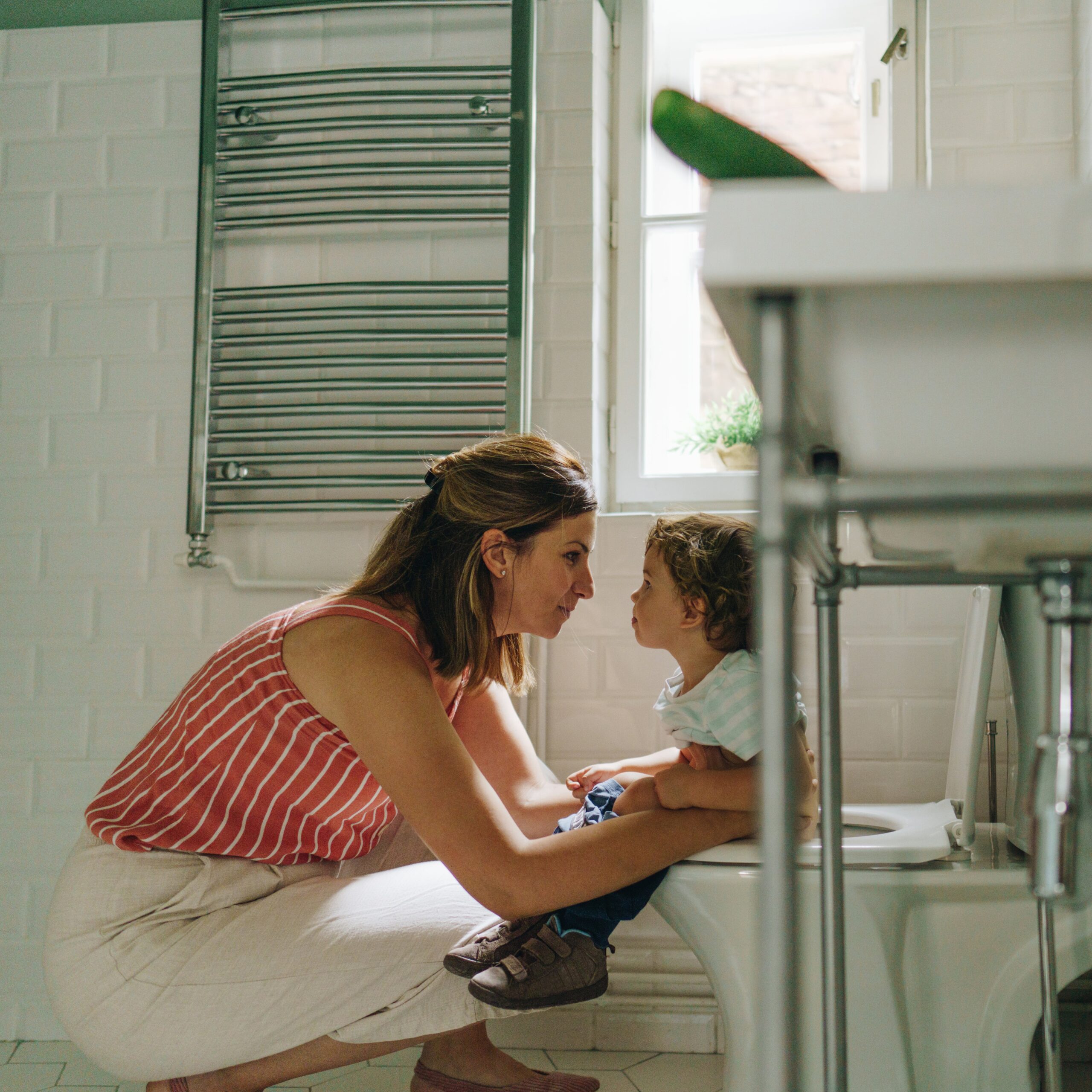
- POPSUGAR Australia
- Family
- What Is Elimination Communication, Exactly? Here’s What People Get Wrong
What Is Elimination Communication, Exactly? Here’s What People Get Wrong

Any parent will probably tell you that potty training is no picnic. With the process comes months (or years) of misunderstandings, mistakes, and messes, both for you and for your tot. But what if we told you that your child could start to learn toilet independence much earlier than the typical 3-year-old?
Baby elimination communication (also known as infant potty training) is the practice of learning your baby’s potty cues and preempting a dirty diaper by bringing your baby to the toilet when they need to go. This doesn’t mean that your child will never have to use diapers again, but it will mean freedom from a dependence on diapers. And while it may seem strange to those who haven’t heard of it before, it’s somewhat common outside the US, including in China, India, and other countries in Africa and Central and South America.
“We noticed less money spent on diapers, no problems or worries with diaper rashes, super easy transition to toilet training. And it made me feel happier as a mom I was reducing waste and felt more in tune with my daughter,” Tawny, mother of two, tells POPSUGAR. She admits the only con to the method was the learning curve in the beginning – “learning to read the cues, get timing right to not worry about them pooping on us, feeling like we knew what we were doing and how to physically support our kid on the toilet.” Ultimately it came down to patience. “We were pretty flexible with allowing our kid to poop and pee when we were out and pretty compassionate about the process, so it didn’t feel like a huge adjustment,” she says.
Elimination communication has many benefits beyond the obvious – fewer diapers and cleaner bottoms. It’s also a great way to foster trust between a parent and child and for a baby to gain self-esteem. When a baby realizes they can have their needs met by expressing those needs, the baby gains a sense of autonomy. EC can also help explain other sorts of fussy behavior – sleeping and feeding issues can all be indicators that a baby needs to “eliminate.”
It takes more time and dedication (at least initially) and will come with its own messes while you’re still learning, but elimination communication might be the best choice for both you and your baby in the long run. Keep reading for a breakdown of the process and best practices you should consider implementing.
Related: Gabrielle Union Sums Up How Potty Training Is Going With This Video of 2-Year-Old Kaavia
What is Elimination Communication?
Elimination communication (EC) is a method of learning your baby’s cues to teach them from an early age that the potty is the place where they need to pee and poo, says Mike Sevilla, MD, family physician at Family Practice Center of Salem in Salem, Ohio. Other terms that are used to describe this method are “natural toilet learning,” “natural infant hygiene,” and “infant potty training,” because traditional potty training usually starts at around age two.
“Through a lot of observation and interactions with your baby, you’ll learn certain signals, cues, and timing which will signal the baby will have to go to the bathroom,” Dr. Sevilla says. “Then, the caregiver will hold the baby over a toilet or other waste container. Yes, initially it will be messy, but with time and experience, EC should start to show some benefit.”
Once mastered, this process is cleaner and easier than diapers and creates a strong bond between child and parent, according to Elizabeth Gillard, early childhood educator and head of schools at Playgarden. “By observing your baby closely, you become more in tune with their rhythms and needs and learn to trust your child to let you know when they need to go rather than determining yourself,” she says. “It can aid with confidence in using the bathroom, which will be especially important once they begin school!”
It also helps to keep your baby comfortable and can even help you learn to prevent fussiness early on by identifying the reason for their discomfort. “Remember that when a baby’s diaper is soiled, more often than not, they will cry; this is a cue that they do not want to sit in their waste,” she explains. By allowing your baby’s cues to help determine when they need to go, you can promote confidence by assisting them to successfully eliminate in the toilet and prevent the discomfort of soiling their diaper.
When Should You Start Using Elimination Communication?
Many families begin using EC from birth, Gillard says, while others will wait until the 18-month mark; either can be successful, depending on your family’s needs and timing. “Typically EC is only used for ages 0-18 months, as it can become more difficult to introduce these concepts to your little one after that. However, EC techniques can be introduced in potty training your child at any age,” she explains. “EC requires time, patience, and dedication, so you should consider your regular routine before starting.” Some families practice EC full-time (including at night), while others only practice it during a designated time of day.
How to Use Elimination Communication in Potty Training
Getting started with EC begins with observation. Give your baby diaper-free time to learn their natural potty times, and note any cues that might be given when the need to eliminate arises. Keep a potty nearby (whether it’s a real toilet, a potty chair, a sink, a Tupperware container, or any other small container), so that when your baby shows signs of needing to go, they can be quickly deposited on the seat. You may even begin to introduce cues when your baby is actively using the bathroom so they will associate those cues with evacuation.
Besides having something for your baby to eliminate into, other baby gear that may be useful includes a waterproof play mat, crotchless pants, infant nightgowns, and other clothing that’s easy to remove.
You can start EC by paying attention to your baby’s natural potty times. Gillard says common times for infants are after waking up and after eating. In the first few days of trying EC, she suggests you have your little one play on a waterproof mat just in case. From there, make sure that there is a toilet nearby, and take your baby to the toilet when they show signs of needing to use the potty.
“For some families, this eliminates the need for diapers altogether, while others will continue to use them as a backup,” Gillard adds. “You will use your baby’s body signals, daily schedule, and your own intuition to guide you through the process as it is unique to every child.” Each family is different, so make sure to choose an elimination method that works best for your family’s needs.
How Do You Know If Elimination Communication Is Right For My Baby?
While there are plenty of benefits to EC – like less waste and easier transition to using the toilet on their own – it can also cause undue stress and pressure on parents, says Natasha Bhuyan, MD, family physician at One Medical in Phoenix. “The drawback is it requires parents to be highly attentive to their child, which is difficult for parents who are working,” she explains. Either way, she recommends parents partner with their family physician to determine the best approach.
When considering EC, it’s essential to do your research and consider your lifestyle first. “Remember that this is a collaborative journey with your child, and accidents are part of the package,” Gillard says. “Enjoy the learning as much as the mastering because, along the way, you are building a bonded and communicative relationship, usually before your child is speaking. You are learning to trust each other and work together to succeed in a common goal that will benefit you both and strengthen the love you share!”
Related: The 15 Best Diaper Backpacks of 2023


